
-----
Cyanide in Brass/Copper plating solution analysis
Q. Hello! I am employed by a small plating company and just recently our lab has been having trouble analyzing our brass and copper strike plating baths for free cyanide. Our titration method uses the bath sample, DI water and 10% KI titrated with 0.1N silver nitrate to a pale yellow endpoint. Instead of the pale yellow, our solution is turning a gray-black. Initially we thought that we were experiencing high sulfides thus causing the precipitation of silver sulfide. Lead acetate was added to try to remove the supposed silver sulfide with no success. Does anyone have any other suggestions as to what could be causing this method interference? Funny thing is that we are plating just fine. Thank you in advance for your help.
Rebecca Batty- Peru, Illinois
October 6, 2021
A. Hello Rebecca. In your case, it looks like "pale yellow" should not be the endpoint. The endpoint is turbidity. You want to stop at the earliest sign that the turbidity is not disappearing because permanent turbidity is the indication that you have passed the equivalence point. All that is needed is a bit of patience in those last few drops of silver nitrate. If you think you may have gone too far, it is always a good idea to repeat the titration and were more careful the second time.
The method I used for free sodium cyanide in a copper strike bath is a variation from published methods in that I increased the sample size in order to get a more accurate result for free NaCN range of the bath that I was using (~6g/L).
a. Pipette
[pipettes on
eBay or
Amazon [affil link]
25.0 mL of bath sample into a 250 mL Erlenmeyer flask.
b. Add about 50 mL deionized water and about 5 mL of 20% potassium iodide.
c. Titrate with 0.100 N silver nitrate to a faint permanent turbidity.
d. Free Sodium Cyanide g/L = 0.392 x mL of 0.100 N silver nitrate.

Jon Barrows, MSF, EHSSC
Kansas City
⇩ Related postings, oldest first ⇩
Q. I have problem with an analysis. Can anybody help me with how to test Rochelle salt ⇦ on eBay or Amazon [affil link] in Copper plating solution?
Thanks,
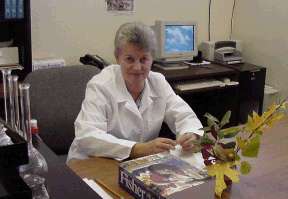
Benigna Skorobogatiene
electrical components mfgr. - San Jose, California
2001
|
|
The "Metal Finishing Guidebook" was an annual publication included with a subscription to Metal Finishing magazine. Elsevier bought Metal Finishing, then closed it in 2013, so the Guidebook is not published anymore. A. The Metal Finishing Guidebook and Directory has a method.
Usually available on
eBay; sometimes on AbeBooks
or
Amazon
(affil links) 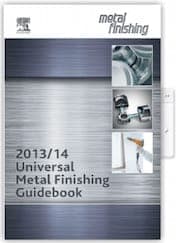
free pdf is currently available from academia.edu The basic method is MFG, comments are mine. 1. 5 ml sample (into Erlenmeyer flask) Calculate: oz/gal KNaC4H4O6.4H2O = ml x 1.25 X N Please respond if you notice any errors!  Bill Vins microwave & cable assemblies - Mesa (what a place-a), Arizona A. Pipette 5 ml Copper cyanide solution into a 250 ml beaker [beakers on eBay or Amazon [affil link] . In a hood, add 10 ml DI H2O and 5 ml HCl. Boil to destroy CN, but not to dryness. Cool, then add 2g Zn dust and allow to react for 30 minutes. Filter into a 250 ml flask and wash the paper. Add 1 g MgSO4, 10 ml 25% H2SO4, 50 ml DI water and exactly 50 ml of KMnO4. Heat to 89-90 °C (do not boil) for about 30 minutes. Cool and add 10 ml 10% KI and titrate with .1M sodium thiosulphate ⇦ on eBay or Amazon [affil link] and record volume used as V. g/l Rochelle salt=(50-V) x 0.938  James Totter, CEF - Tallahassee, Florida A. This is a fairly straightforward analysis. Take 5 mL of sample by pipet and transfer to a 100 mL Erlenmeyer flask. Add 25 mL 25% Sulfuric Acid to the flask. WARNING: this will evolve Hydrogen Cyanide! Perform in a fume hood. Filter. Wash the flask and filter paper twice with DI water. Boil the collected filtrate for 5 minutes. Allow to cool. Titrate with 0.1N KMnO4 to a pink endpoint. Calculate Rochelle Salt Conc. (g/L) = mL used x 0.9375 Best of Luck, Ira Donovan, M.S.F.Kansas City, Missouri |
by Terrance H Irvine
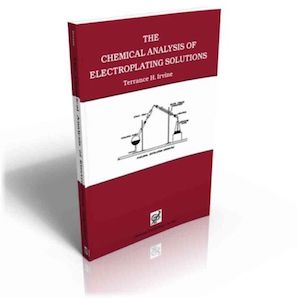
on eBay or Amazon
or AbeBooks
(affil link)
A. Another method that does not need filtering is as follows:
Take 5 mls of plating solution into a flask.
Put in a fume cupboard, add 10 mls of H2SO4, Hydrogen Cyanide gas will go up the fume cupboard. Put the flask on a hot plate and heat until white SO2 fumes appear after the water has all boiled off. Remove from the hot plate, add 100 mls of water. Then add conc. ammonia
⇦ on
eBay or
Amazon [affil link] until a deep blue colour just appears and remains. Add a few drops of 1-(2-Pyridylazo)-2-Naphthol (PAN) as indicator, then titrate to a green end point with 0.1 M EDTA. The colour may go back to purple a couple of times before you get the green end point to remain with addition of further EDTA.
Cu g/l = Titre X 3.169.
Mark Lees- Isle of Man Great Britain
October 31, 2011
Can't see color change in titrating for Copper Cyanide
Q. I am having problems seeing a color change while titrating for Copper Cyanide in a Copper Plating bath, here is the method I am using:
2 ml sample, 100 mls H2O, 15 mls Concentrated Nitric Acid, heat to Blue color, add concentrated ammonium Hydroxide to deep blue and then acetic acid
⇦ on
eBay
or
Amazon [affil link] to light blue, add 5 g KI, titrate with 0.1N Sodium Thiosulphate to pale yellow, add Starch indicator and continue titrating to a clear endpoint.
My problem is that I am having a hard time seeing the original color change to blue after heating, if anyone can offer any advice or a better method, please help.
Tony Schmaltz- Kent, Washington
2002
A. Your method requires modification. It is necessary to destroy the cyanide first but then you must get rid of the nitric acid as it is an oxidant and will effect the thiosulphate endpoint. It is usual to add sulfuric acid and nitric acid and then boil until you see the white fumes of sulfuric acid when all the nitric has been also boiled away. This MUST all be done in a fume cupboard. Also fluoride needs to be added at this stage to complex any iron contamination If you don't have a fume hood find a method using EDTA and PAN indicator where the cyanide is destroyed with hydrogen peroxide.

Geoffrey Whitelaw
- Port Melbourne, Australia
by Langford & Parker
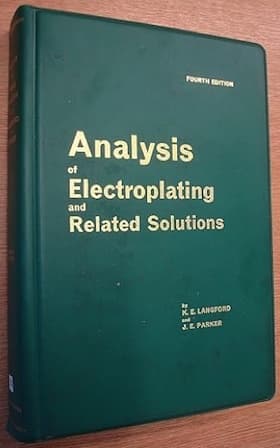
on Amazon
or AbeBooks
(affil link)
A. We use a similar method, which is very accurate and repeatable. Probably the differences lie in the details. Here is our method:
a) Pipette 10 ml sample into a 250 ml Erlenmeyer.
b) Add 5 ml Sulfuric conc. and 1 ml Nitric conc. Acid while shaking under a hood. WARNING! dangerous HCN gas is evolved.
c) Boil until dense, white sulfur trioxide fumes are evolved, to eliminate all nitric acid.
d) Cool and add 100 ml deionized water.
e) Add Ammonium Hydroxide conc. until the solution is colored dark blue and a definite ammonia odor can be noted.
f) Boil for 15 minutes or until all excess ammonia has been vaporized.
g) Add 2 gr Ammonium Bifluoride and 10 ml acetic acid (5N) and at this point the solution turns to light blue.
h) After cooling at room temp. add 25 ml Potassium Iodide (20%) and shake.
i) Titrate with 0.1N Sodium Thiosulphate until the brown color of the solution begins to turn yellow.
j) Add 2 ml starch indicator solution, 2 g ammonium thiocyanate
⇦ on
eBay
or
Amazon [affil link]
and continue titration until the blue color disappears and does not return for about 1 minute.
k) Let A ml be the volume of Sodium Thiosulphate consumed.
CALCULATION. Copper Cyanide, g/l= A x N (of sodium thiocyanate [affil link]) x 8.94
Angela Nikolaouaerospace industry - Tanagra, Greece
Copper plating solution analysis, Potassium Cyanide
Q. I have a problem with an analysis. Can anybody help me with how to test Potassium Cyanide in Copper plating solution?
Avel Berroya- Harbor City, California
2002
A. Avel Berroya, you can have the analysis from metalfinishing.com, then go to chemical analysis of plating solutions or control, analysis and testing.

Popatbhai B. Patel
electroplating consultant - Roseville, Michigan
2002
A. That's not hard. Combine 5.0 ml of plating bath with about 100 ml of distilled water in a flask. Add about a gram of potassium iodide, and swirl the flask until it is dissolved. Then, titrate the mixture with 0.1 N silver nitrate solution. The endpoint is a persistent yellowish white cloudiness. Then, multiply the mls silver nitrate used by 0.347 for "free" potassium cyanide, in ounces per gallon.

Dave Wichern
Consultant - The Bronx, New York
2002
EDTA and PAN indicator method
Q. I'm working in a electroplating company as Lab assistant. I had to analysis the copper cyanide solution, but I need to use the method which use the EDTA and PAN indicator. Please give me the information?
Png Aik Fongelectroplating - Singapore
2003
A. Pipette 2 ml sample
Add approx. 1 g ammonium persulphate Warm to decompose CN
Add 10 ml of ammonia and approx. 100 ml DI water
Add PAN indicator and titrate with 0.1M EDTA.
1ml EDTA = 0.00637g Cu

Geoffrey Whitelaw
- Port Melbourne, Australia
2003
A. Mr. Whitelaw offers sound advice, as usual. The only thing I'd do different is to use H2O2 for prelim. CN destruct.

Dave Wichern
Consultant - The Bronx, New York
March 4, 2017
Ammonia and Muroxide indicator method
Q. I'm working in a electroplating company as Lab assistant. I had to analysis the copper cyanide solution, but I need to use the method which use the ammonia and Muroxide indicator. Please give me the information?
marwa nour eldin ibrahimCairo, Egypt
July 18, 2008
A. 10ml sample solution dilute to 100 ml
get 5 ml sample
add 50 ml water
add 10 ml ammonium hydroxide
add 2-3 ml of muroxide solution
endpoint purple
6.35 x F x V
- Cebu, philippines
How to correct 3% to 4% error
Q. Dear Sir,
I'm working in a Pharmaceutical company (R&D) as Lab assistant. I had to analyze copper cyanide, I am not having the correct method of analysis of the same. My results are varying about 3 to 4 %. Please give me correct method with specification. Which precautions do I have take at the time of analysis? I will very thankful to you.
Thanking you,
Babasaheb E. DalviLab assistant - Kharghar, Navi Mumbai, Maharashtra, India
2004
Hi Babasaheb. We appended your question to a thread which may answer it, but please get back to us with any further questions.
Regards,
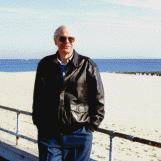
Ted Mooney, P.E.
Striving to live Aloha
finishing.com - Pine Beach, New Jersey
Ted is available for instant help
or longer-term assistance.
|
|
Q. How to analyse hydroxide in cyanide copper plating onto zinc? Olga TubinLab technician - Canada April 2, 2009 |
Q. Hello folks,
My name is Bruno Pires and I am from Brazil. I work in a aeronautic company that supplies non destructive tests, chemical treatments and painting.
We are developing a small line for copper plating. I found some potentiometric bath analysis method, but we don't have this equipment.
I would like to know if there is another kind of bath analysis instead of potentiometric method, for example by titration and color change.
Bath composition:
caustic soda ⇦liquid caustic soda in bulk on
Amazon [affil link]
: 13,7 g/l
Sodium Cyanide: 4,7 g/l
Copper Cyanide: 37 g/l
Rochelle Salt: 49,8 g/l
Temperature: 50 - 60 °C
- Sao Jose dos Campos, Sao Paulo, Brazil
January 31, 2012
A. Hi Bruno,
There are some really useful volumetric methods in this publication by Charles Rosenstein and Stanley Hirsch. You will find most of what you are looking for:
www.clarksonlab.com/caps.pdf
Chemist - Poole, Dorset
February 3, 2012
I have two questions:
Q1. Can someone help clarify the solution analysis procedure for free potassium cyanide in a copper cyanide bath? We have two different sources with different analysis and we are unsure which to use. Both sources have the same procedure: 10 mL sample, add 100 mL DI water, and 5 mL of 10% potassium iodide. Titrate with 0.1N Silver iodide until a faint yellow precipitate.
Source 1: mL 0.1N Silver nitrate x N silver nitrate x .173 = oz/gal free KCN
Source 2: mL 0.1N Silver nitrate x .173 = oz/gal free KCN
The differences are a factor of 10 (the normality of the silver nitrate). Can someone please help clarify which to use?
Q2. For a cyanide copper bath that uses KCN, CuCN, KOH, and brighteners, what is the difference in measuring the "free cyanide" or the "free potassium cyanide"?
Thank you in advance
- Mount Prospect, Illinois, USA
May 28, 2013
A1. Hi Karen. On the thread we appended your inquiry to, Dave Wichern has told us that Source 2 is the correct one. Further, the Source 1 formula sounds like a very awkward way of expressing the situation, so I'd guess it's just a typo or transcription error; my bet is they meant to say multiply the mL of silver nitrate titrant times its normality times .173 -- which would make it agree with Source 2 and with Dave.
A2. I don't think there is any difference between "free cyanide" and "free potassium cyanide". Some cyanide plating baths are based on sodium cyanide rather than potassium cyanide, in which case I don't think there would be any difference between "free cyanide" and "free sodium cyanide". But I'm no chemist so corrections are certainly welcome.
Regards,

Ted Mooney, P.E.
Striving to live Aloha
finishing.com - Pine Beach, New Jersey
Ted is available for instant help
or longer-term assistance.
Q. Hi, I've tried Mr. Totter's Rochelle salt analysis procedure. It's a better titration than titrating with KMnO4. But actually there is something wrong with my Rochelle amounts. I've tried with 0.1N KMnO4 addition. It shows up to be 3 times larger than I've expected. Can you help me about how I can adjust the normality of my KMnO4 solution?
Thanks,
- Ankara, Turkey
July 25, 2013
Q1. Hi sir,
please help me to know criteria to decide if copper cyanide is good or know to use it in copper cyanide bath.
I had copper cyanide containing 55% copper metal. It is acceptable or not?
Q2. My other question is about Role of Hydroxyl group in copper & brass Bath and How to determine it?
Chemical Engineer - Alexandria, egypt
March 2, 2017
A. For NaOH you titrate to a sulfo orange ⇦ on eBay or Amazon [affil link] endpoint with 0.1 N HCl. Look up the factor.

Dave Wichern
Consultant - The Bronx, New York
(affil links)

free pdf is currently available from academia.edu
A. Hi Asmaa. Copper cyanide, CuCN, is 71% copper. But a plater might buy soluble K2Cu(CN)3 or Na2Cu(CN)3, thus about 34% or about 29% copper. Plating shops generally buy process chemicals from trusted sources, they don't simply find chemicals somewhere and then test for every possible contaminant which might be problematical -- they'd have no time for plating :-)
Copper cyanide plating is the subject of 20-page chapters in many plating text books, so it's hard to say how to use it in a paragraph or two... maybe you can be a bit more specific with your question? But in the meanwhile, the Metal Finishing Guidebook has a pretty good explanation of the subjects of your inquiry. Good luck.
Regards,
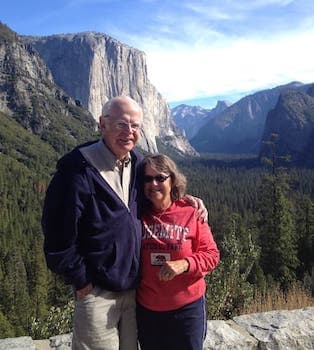
Ted Mooney, P.E. RET
Striving to live Aloha
finishing.com - Pine Beach, New Jersey
Ted is available for instant help
or longer-term assistance.
![]() Hi.
Hi.
Thanks, valuable book.
Q. Mr. Dave, can I use methyl orange ⇦ on eBay or Amazon [affil link] instead of sulfo orange ⇦ on eBay or Amazon [affil link] indicator
Asmaa el-sayeda [returning]Chemical Engineer - Alexandria, egypt
March 30, 2017
Q. Can anyone tell me the volumetric procedure to calculate sodium potassium tartrate in copper cyanide bath? Is there any volumetric procedure to calculate total sodium cyanide in copper cyanide bath?
General purpose tank used for cooper plating zinc based die casting should be like:
Copper cyanide: 30 grams per lite
Total cyanide: 48 grams per litre
Free cyanide: 15 grams per litre
Rochelle salt: 30 grams per litre
sodium carbonate
⇦ on
eBay or
Amazon]
: 15 grams ler litre
Sodium hydroxide: 5 grams per litre
Also tell me the procedure to calculate sodium hydroxide and sodium carbonate in the bath.
I am facing blistering problem after my object is subjected to heat and polishing or it is taken to nickel bath.
Is this due to low cyanide or high cyanide in my bath..
What is the perfect ratio for free cyanide and copper cyanide in copper cyanide bath.
I have checked my pre plating procedure several times
It is like:
Tri chloroethylene cleaning, ultrasonic cleaning, anodic cleaning, cathodic strike cleaning,
sulfuric acid dip in 3 percent solution for 10 secs and 10 sec dip in hydrofluoric acid and after that cyanide plating.
SMC - Jalandhar, Punjab (India)
April 8, 2018
Chloride in Copper Cyanide Plating Bath
Q. Hi, my name is Lamberto and I work at a galvanic for the aeronautical sector. I am afraid of having chloride contamination and I would like to determine its concentration in the cyanide copper bath. Do you have a method to suggest? Can you tell me an acceptable maximum limit?
Thank you.
- Foligno, Umbria, Italia
November 19, 2018
A. Hi Lamberto. Google the Mohr method, or Fajans method. Each are relatively simple to perform, I typically use them for our acid chloride zinc bath. Do a bit of digging and ensure that it will function in an alkaline environment but I believe it should serve your purpose. As always when dealing with cyanide, take the necessary precautions; I am sure someone more knowledgeable on the subject may be able to offer better advice, but this should give you a place to start.
- Jordan
- Huntington, West Virginia, USA
December 19, 2018
![]() Thanks for the directions, for now I tried with a colorimetric method that gave good results; I will try to compare them with those suggested.
Thanks for the directions, for now I tried with a colorimetric method that gave good results; I will try to compare them with those suggested.
Thank you
- Foligno, Umbria, Italia
December 20, 2018
A. Thinking about this further, those methods may work, but the silver nitrate is going to bind with the cyanide in solution as well. Not sure which would be preferential, I'd guess the cyanide, but if you did try it you could start measuring the chloride content once the precipitate appeared. Glad you got some results though, if you don't mind me asking, where do you think your source of chloride may have come from? Did it seem to cause any adverse affects on the plate?
Jordan Egnatoff- Huntington, West Virginia, USA
December 20, 2018
Comment:
Surely I will have to eliminate cyanides by acidifying the sample to avoid precipitation, I'm used to control the Rochelle. The chloride source is definitely the previous pickling, there are three rinses before going into copper, but sometimes the pieces are complex and can drag liquids, sometimes the guys in production are too fast ... small pinholes that can compromise subsequent heat treatments; however, increasing the time and flow of rinsing water the problem has disappeared.
Thanks again for the availability.
- Foligno, Umbria, Italia
December 21, 2018
June 24, 2020
⇦ Tip: Readers want to learn from your situation;
so some readers skip abstract questions.
Q. Hello friends,
What is the procedure to test carbonate levels in Rochelle based cyanide copper bath?
- New Delhi , India
![]() Hi Arpit. We appended your question to a thread where it has been discussed for 19 years now :-)
Hi Arpit. We appended your question to a thread where it has been discussed for 19 years now :-)
If the answers are insufficient for your needs, please expound with the details of your situation. Thanks!
Luck & Regards,

Ted Mooney, P.E. RET
Striving to live Aloha
finishing.com - Pine Beach, New Jersey
Ted is available for instant help
or longer-term assistance.
July 2020
Q, A, or Comment on THIS thread -or- Start a NEW Thread
